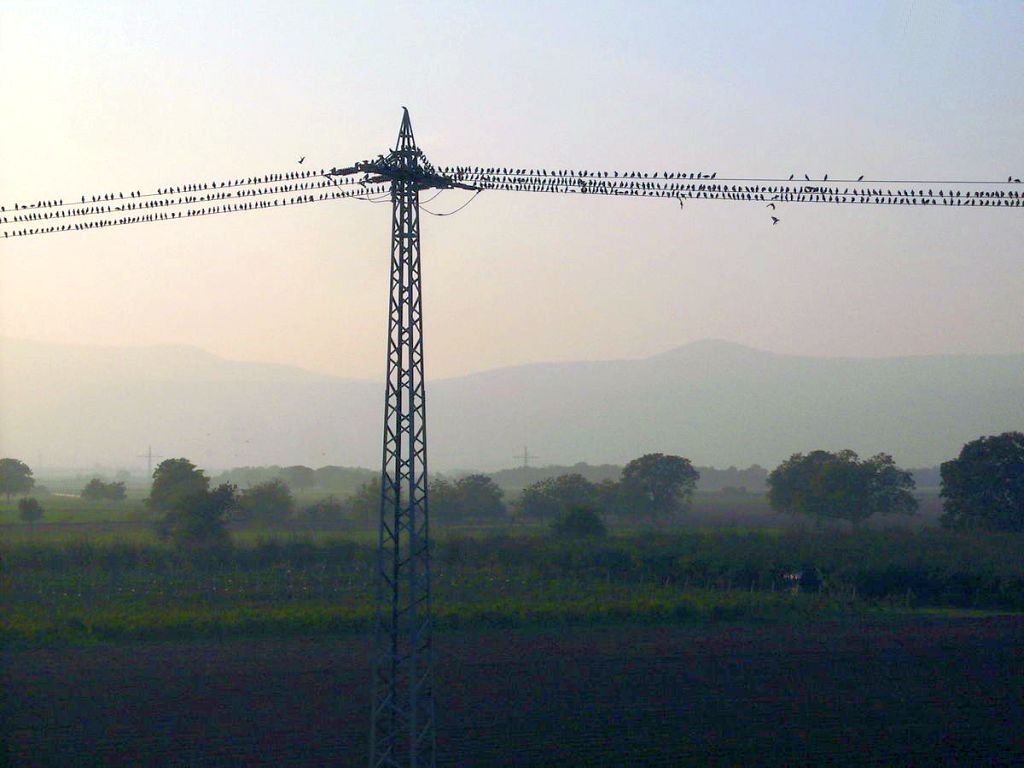
In the winter huge flocks of starlings line up on the electric wires. They even perch on un-insulated wires like those shown above. Why don’t they get electrocuted?
Here’s some helpful background: Electricity is the flow of electrons in a complete circle — called a “circuit” — that moves out from the power source, into our appliances, and all the way back to the power station. The electrons flow in the path of least resistance.
If a bird steps in and connects the inbound and outbound electron paths it conducts the electricity through its body on a short(er) circuit. Click here for a video that shows how circuits work.
Birds are safe as long as they don’t short circuit. The video below explains the electrical reason why birds have to…
- Touch only one wire. (videomark 0:28 to 0:47) … and …
- Not touch a wire and the pole simultaneously. (videomark 0:58 to 1:13)
Birds with long wingspans, like cranes and eagles, can accidentally touch two wires. Smaller birds that mess with the insulators (wire-to-pole connections) can also get electrocuted.
Electric companies prevent bird deaths and worker accidents by placing the wires far apart and increasing the gap between the insulators and the pole (wire-to-pole connections).
No one wants to be a short circuit!
(photo from Wikimedia Commons; click on the caption to see the original)